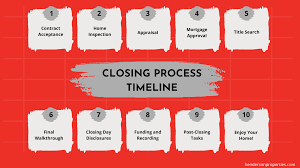Buying a home is an exciting milestone, but the journey isn’t complete until the closing process is finished. Closing is the final step where ownership legally transfers from the seller to the buyer, and it involves several important steps and paperwork. Understanding what to expect during the home closing process can help you navigate it smoothly and avoid surprises.
1. Review and Sign Documents
During closing, both the buyer and seller will review and sign a variety of legal documents. These include the deed of trust, mortgage agreement, closing disclosure, and title documents. The closing disclosure outlines the final loan terms, closing costs, and who pays what, so it’s crucial to review this carefully. Your real estate agent, lender, or attorney can help explain any confusing terms.
2. Conduct a Final Walk-Through
Before the closing meeting, buyers typically do a final walk-through of the property to ensure it’s in the agreed-upon condition. This means checking that repairs have been completed, appliances work, and the home is clean and empty. If anything is amiss, buyers should raise concerns immediately to avoid issues after closing.
3. Pay Closing Costs and Fees
Closing costs generally range from 2% to 5% of the home’s purchase price and include fees for the loan origination, title insurance, appraisal, inspections, taxes, and attorney services. Buyers usually bring a cashier’s check or arrange a wire transfer for these amounts. Sellers also pay certain fees, such as real estate agent commissions.
4. Transfer of Ownership
Once all documents are signed and funds are transferred, the title company records the deed with the local government, officially transferring ownership. Buyers receive the keys to their new home, and the process is complete.
5. After Closing
After closing, buyers should keep all closing documents safe, as they may be needed for future reference or tax purposes. Also, setting up utilities and changing your address are important next steps.
Conclusion
The home closing process involves detailed paperwork, final inspections, and financial transactions that mark the official transfer of ownership. By knowing what to expect and preparing in advance, buyers and sellers can help ensure a smooth and successful closing experience.
